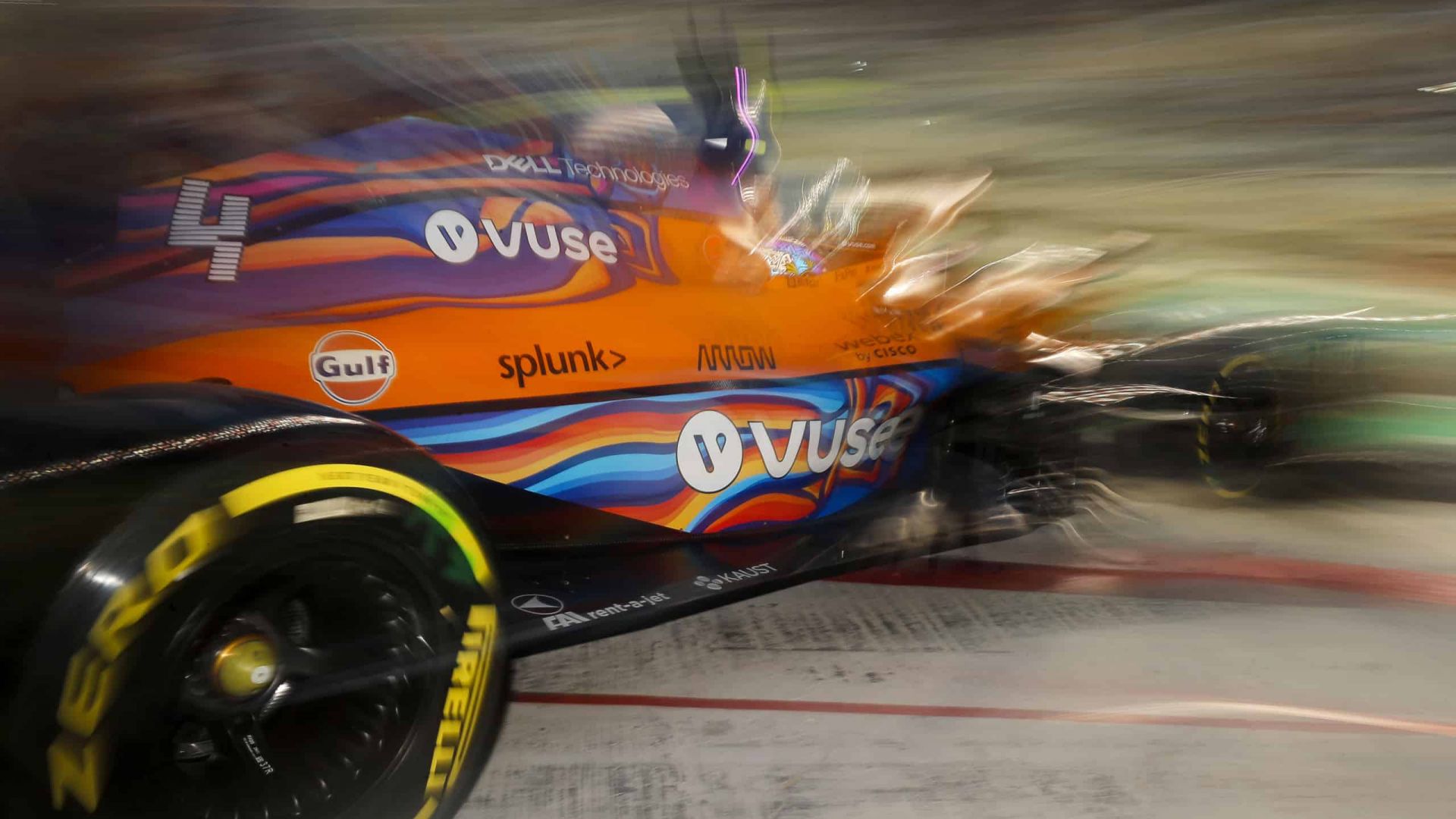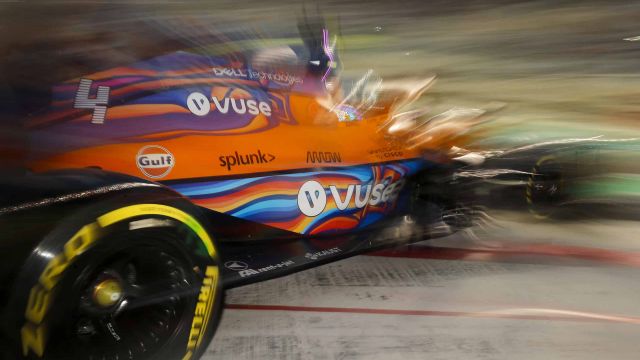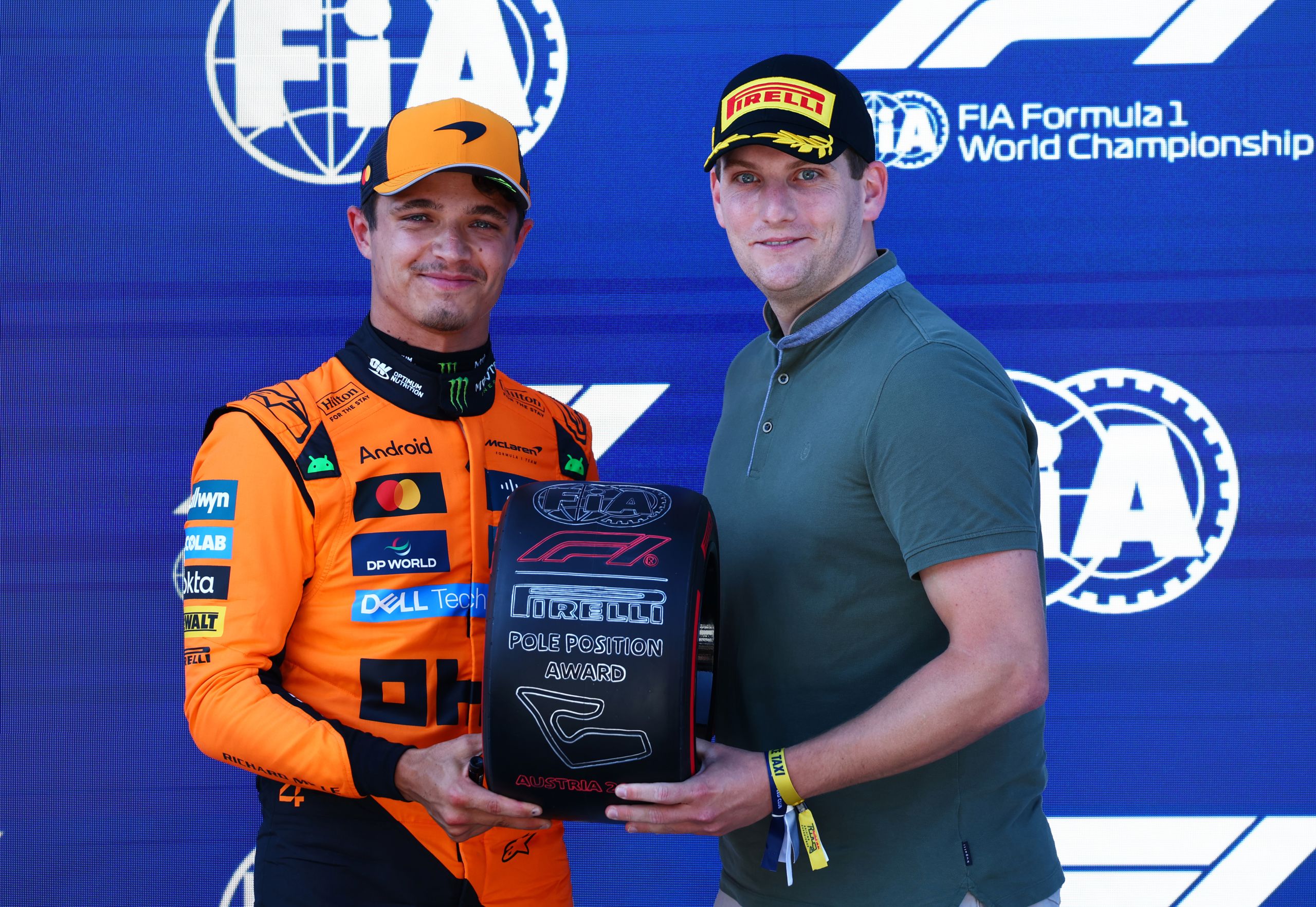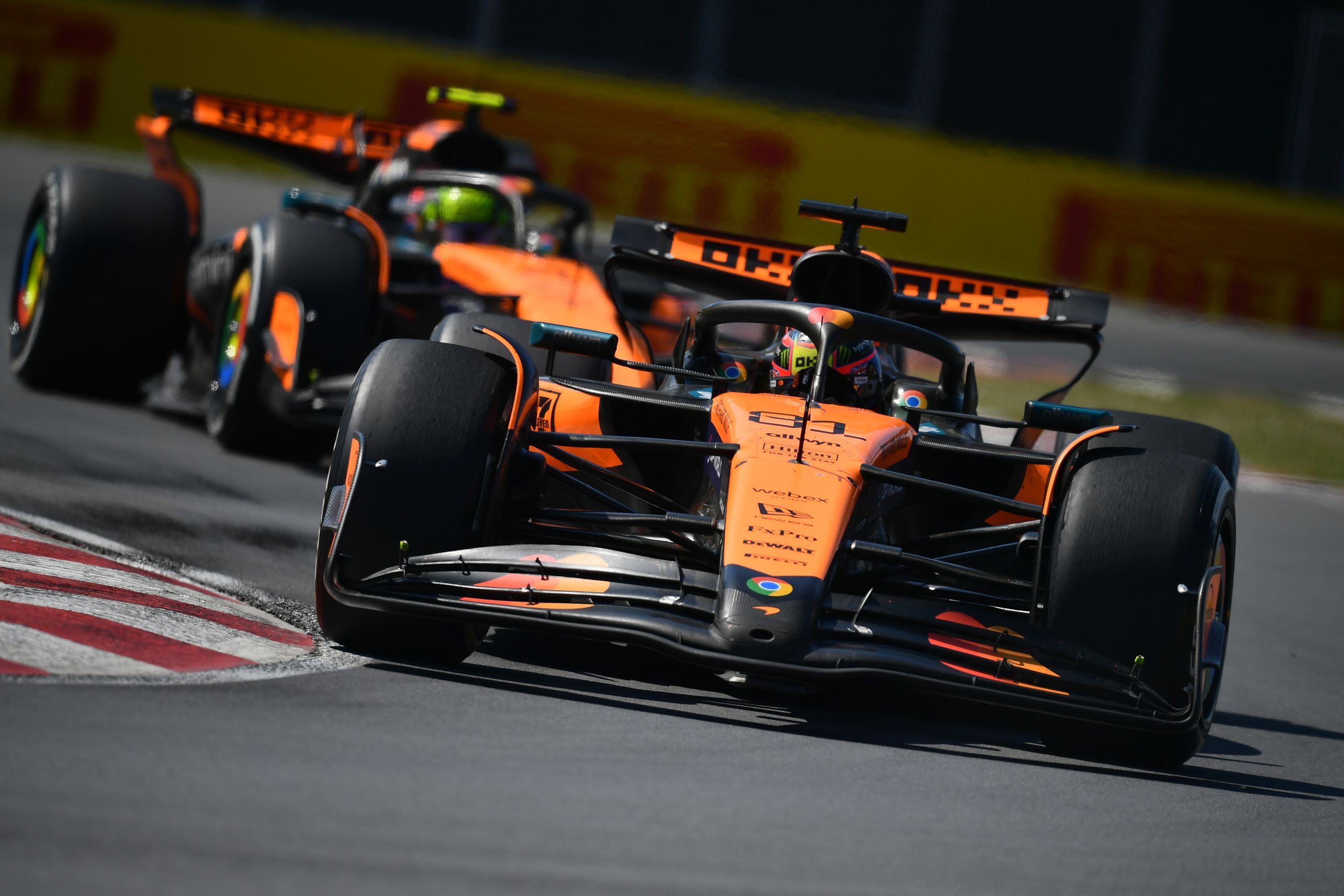Are Formula 1 Cars Electric?


When it comes to Formula 1, advanced engineering and cutting-edge technology are the top priorities. This is why Formula 1 cars are considered the best of their kind—there is no other car that is as well-designed and well-engineered.
Boasting its cutting-edge technology, you’d think Formula 1 cars have everything. And there’s one recurring question by fans, old and new alike—Are Formula 1 cars electric or petrol powered?
Let us save you time by answering that question right now, right here: Formula 1 cars are petrol-powered and they will be at least for the next few years.
Why are Formula 1 cars not electric?
Car manufacturers—from Audi to Volvo—are starting to go all-electric as preparation for the future. But why not bring this technology to Formula 1? Let us try to explain why through simple science.
In Formula 1, a race distance is about 200 miles. The amount of energy it takes to complete a Grand Prix that long is just not something an electric-powered battery can manage to produce.
Per race, Formula 1 cars are given 242.5 pounds of fuel. At gasoline’s usual energy density of 12,889 Wh/kg, a full tank’s potential energy is brought up to a hair over 1,400 kWh.
However, Formula 1 cars are designed to only convert just over 50 per cent of potential energy into horsepower. This means the amount of propulsion actually generated by the engine is just around 700kWh. And with the energy recovery systems of Formula 1 cars, an additional 1.11 kWh per lap is contributed. With this, the total energy expenditure over a race distance is only somewhere around 750kWh.
Of course, not every joule of that 750 kWh has to be stored onboard a hypothetical electric-powered race car. In order for cars to reach the finish line, regenerative braking also plays an important role. However, the energy it contributes is only a small fraction of the energy needed to finish a race. According to estimates, only as little as four per cent can be contributed by a superbike’s regenerative braking in a race. This figure can only reach up to 20 to 25 per cent by an electric-powered race car. Additionally, Formula 1’s drag-heavy aero generates almost 1 g of deceleration at high speeds, reducing these digits.
Considering a Formula 1 car’s mean race weight of 1,942 pounds, storing enough energy in a battery to complete one Grand Prix—with no recharging in between—is just not possible.
It is estimated that lithium-ion batteries can deliver up to 265 Wh/kg of energy. That’s hardly 48th the density of gasoline. A lithium-ion battery weighing 5,200 pounds would also be needed. Imagine racing with a battery that heavy around a track at the speed of a Formula 1 car for an entire Grand Prix. In numbers, it will require 1,674 kWh of energy.
What about allowing recharges in between races? In the current way Formula 1 is doing things, charging fast enough isn’t possible. Battery replacements are also out of the question as well as car swapping.
To summarize, if Formula 1 can solve this energy generation problem posed by full-electric cars which will allow a Formula 1 car to run a full race with no sweat at all, we might be able to see batteries takeover the circuits. But as of today, this is just not possible.
What kind of engine do Formula 1 cars use?
All Formula 1 cars are equipped with the same specification power unit: A 1.6 litre four-stroke turbocharged 90 degree V6 reciprocating engine.
The F1 power unit is divided into four parts:
- The MGU-H (Motor Generator Unit – Heat – recovers energy from the turbo)
- The MGU-K (Motor Generator Unit – Kinetic – recovers energy from the rear axle)
- The Internal Combustion engine
- The turbo
Last season, drivers could use three of each of the above four parts. If they used more, they were penalized.
Additionally, each power unit is equipped with an Energy Recovery System which harvests extra heat energy from the brakes and exhaust of the cars.
Following the FIA‘s engine freeze, the 2022 Formula 1 cars will keep the same specifications as the 2021 cars, with one change: The Motor Generator Unit-Heat (MGU-H) system will be removed from the 2022 Formula 1 engines. The Motor Generator Unit-Kinetic (MGU-K) will overcome this problem by being more powerful, and by relying more on the driver and allowing them to use it strategically throughout a race.
This takes us to the next question…
What fuel do Formula 1 cars use?
Formula 1 cars use a controlled mixture of ordinary gasoline. Under current regulations, cars run on fuel containing 5.75% bio-components. The 2022 season will see the bio-component ratio at 10%. This is possible by moving to E10 fuel—a mixture of 90% fossil fuel and 10% ethanol.
Despite the fact that Formula 1 cars can use 110 kilograms of fuel per race (305km/190 miles), they do not always fill up with that much fuel. This is due to the fact that the heavier a car starts with, the more time it costs per lap.
To allow drivers to push more of the time, Formula 1 cars are now allowed to use 110 kilograms of fuel per race since 2019. With today’s aerodynamics, cars are creating more downforce and resulting in increased drag, which is increasing fuel consumption across the grid and causing drivers to use lift-and-coast to reach the end of the race.
What are the fuel testing rules for Formula 1?
Many still view high fuel consumption as a good thing, because it indicates that a vehicle is being driven to its limits. But with the current era of hybrid technology increasing efficiency, opting for clean energy and racing for sustainability, the face of motorsport is evolving quite dramatically.
To ensure an even playground for all teams competing in races, much like the designs of Formula 1 cars, the fuel use is also strictly regulated.
You may remember one of the biggest disappointments of the most 2021 Formula 1 season—when Sebastian Vettel was disqualified after placing second in August. Why the disqualification? Vettel failed to provide enough fuel samples.
Formula 1 strict fuel rules state that “competitors must ensure that a 1.0-litre sample of fuel may be taken at any time during the event.” This is because running less fuel can increase performance.
Analyzing and checking that sample for compliance with the relevant standards and rules is then possible. The sample is also compared to the sample provided from the beginning of the year to ensure that the composition is the same.
Gas chromatography is used to analyze fuels, which separates them into their various components.
Do Formula 1 cars refuel?
Formula 1 cars haven’t been allowed to refuel since 2010. To reduce costs and improve safety, the FIA decided to ban them. Currently, the cars are given full tanks to start the race. Fuel management is crucial so that the drivers will not run out of fuel before crossing the finish line.
Yes, it is true that refuelling added more ways to strategize and made the sport more thrilling but FIA decided it was not worth it to sacrifice the safety of drivers and mechanics due to some accidents that used to be part of the game.
What is the 2022 engine freeze?
A development freeze essentially prevents further engine development during a specific time frame. All engine manufacturers in Formula 1 will be prevented from developing their engines as a result of this.
Formula 1 currently has four engine manufacturers: Mercedes, Honda (at least until Red Bull takes over in 2022), Renault, and Ferrari.
Following the graceful exit of Honda from the Formula 1 scene, Red Bull has been compelled to announce plans to take over the intellectual property of the Japanese manufacturer’s power unit. However, the company has repeatedly stated that they cannot continue to update the engine each season due to the high costs involved.
Hence, Red Bull’s put forward a proposal for an engine freeze beginning 2022 and which shall last until 2025.
Initially, Ferrari and Renault were among those who opposed this proposal. Nevertheless, as the proposal gained traction, all the teams came around to the idea. The proposal was finally adopted on February 11.
As a result, 2022 Formula 1 cars will feature the same engines as the 2021 cars due to the implementation of the 2022 Formula 1 regulations.
Conclusion: Are Formula 1 cars electric?
While it is not entirely impossible for a future with only batteries on the racetracks, it seems we are still a long way away from fully-electric Formula 1 cars. Of course, this transition will divide fans but knowing how these motorsports evolve over time, we’re pretty sure all-electric Formula One will eventually gain fans’ acceptance.
Are you in favour of Formula 1 going fully electric in the future? Let us know in the comments below…
Are Formula 1 Cars Electric? – FAQs
How are F1 cars powered?
Formula 1 cars are powered by internal combustion engines that run on gasoline. These engines are highly advanced and can produce over 1,000 horsepower, making them some of the most powerful engines in the world. The engines are typically V6 turbocharged units that use hybrid technology to boost performance and efficiency. The hybrid system consists of an electric motor that is powered by a battery pack, which is charged by regenerative braking and the engine’s exhaust gases. The electric motor can provide an additional power boost of up to 161 horsepower for a limited time during the race. The hybrid system also allows the engine to shut off when the car is coasting or braking, which helps to save fuel and reduce emissions. While F1 cars are not fully electric, the hybrid technology used in the cars is a step towards a more sustainable future for motorsports.
Is F1 going electric?
The question of whether F1 is going electric is a matter of debate and speculation. While there have been discussions about the possibility of F1 transitioning to fully electric power in the future, no official plans have been announced yet. F1 CEO Stefano Domenicali has stated that the series will not switch to electric power, but will instead focus on developing synthetic fuels as a more sustainable alternative to traditional gasoline. However, some experts and fans believe that F1 will eventually have to make the switch to electric power in order to stay relevant and competitive in the rapidly changing automotive industry. As of now, it remains unclear whether F1 will go fully electric in the future, but the series is certainly exploring various options for reducing its environmental impact and promoting sustainability.
Do Formula 1 cars refuel?
No, Formula 1 cars do not refuel during races. Refueling during races was banned by the FIA in 2010 in order to reduce costs and increase safety. The cars start the race with a full tank of fuel, and the drivers must manage their fuel consumption carefully to ensure they have enough to complete the race distance. This has added a strategic element to the races, as teams must balance the need for speed with the need to conserve fuel. In addition to reducing costs and increasing safety, the ban on refueling has also helped to make the races more exciting and unpredictable, as teams can no longer rely on refueling stops to gain an advantage over their rivals.
Why can’t F1 cars be electric?
There are several reasons why F1 cars cannot be fully electric at the moment. One of the main reasons is that the current battery technology is not advanced enough to provide the power and range needed for an F1 car to complete a race at full speed. F1 cars require a tremendous amount of power and speed, and the current battery technology is not capable of providing that level of performance for an extended period of time.
Another reason is that F1 is a sport that is deeply rooted in tradition and history, and many fans and stakeholders are resistant to the idea of fully electric cars replacing the traditional internal combustion engine. F1 has a rich heritage of high-performance engines and the sound and spectacle of these engines is an integral part of the sport’s appeal.
Additionally, F1 cars are designed to be lightweight and aerodynamic, which means that adding the weight of a battery pack and electric motor would significantly impact the car’s performance and handling. While hybrid technology has been successfully integrated into F1 cars, fully electric powertrains would require a complete redesign of the cars and would likely result in a significant loss of performance.
Despite these challenges, F1 is exploring various options for reducing its environmental impact and promoting sustainability, including the use of synthetic fuels and other alternative energy sources. While it remains to be seen whether F1 will ever transition to fully electric power, the sport is committed to finding innovative solutions to the challenges of sustainability and environmental responsibility.
Do Formula 1 cars have batteries?
Yes, Formula 1 cars have batteries as part of their hybrid powertrain systems. The batteries are used to store energy that is harvested from the car’s braking system and from the engine’s exhaust gases. This energy can then be used to power an electric motor that provides an additional power boost to the engine. The batteries are typically lithium-ion units, similar to those used in electric vehicles, and are located in the car’s energy store, which is a part of the power unit. The batteries are an essential component of the hybrid powertrain system, which has been a part of F1 since 2014, and has helped to improve the sport’s efficiency and reduce its environmental impact.





